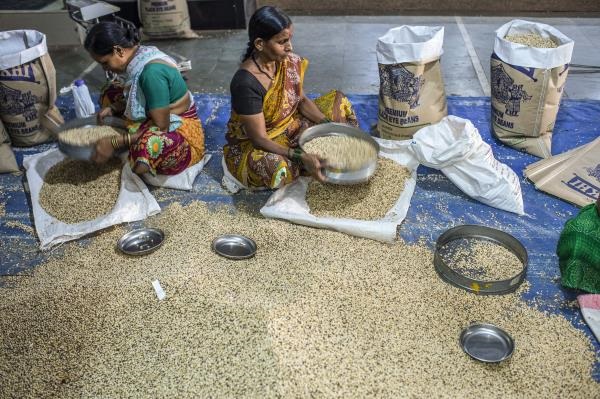
4 October 2018, Rome - Global agricultural food commodity prices fell in September due to growing inventories of key staples.
The FAO Food Price Index declined 1.4 percent from August and is now 7.4 percent below its level during September 2017.
The FAO Cereal Price Index dropped 2.8 percent, led by maize as expectations of a very large crop in the United States of America pushed export quotations down. International prices of rice and wheat also fell during the month, the latter due primarily to ongoing strong sales and shipments from the Russian Federation.
The FAO Vegetable Oil Price Index posted its eighth consecutive monthly decline, dipping 2.3 percent to a three-year low. Palm oil prices registered the sharpest decline, as large inventories in major exporting countries weighed on price quotations, which are now 25 percent below their level of a year ago.
The FAO Dairy Price Index declined 2.4 percent in September, continuing its downward trend, while the FAO Meat Price Index slipped marginally from its revised value for August.
The FAO Sugar Price Index is 21 percent below its September 2017 level, while it rose 2.6 percent from August as ongoing harvesting operations in Brazil, the world's largest producer and exporter, point to drought conditions having had a negative impact on sugarcane yields. Sub-par monsoon rainfall in India and Indonesia also provided upward support to international sugar prices.
FAO raises its 2018 cereal production forecast
With its Cereal Supply and Demand Brief, also released today, FAO raised its forecast for this year's global cereal production to 2 591 million tonnes, still 2.4 percent below the record high of 2017.
Reduced rainfall in Australia and Canada are expected to lower wheat yields, which, however, should be offset by higher outputs in Algeria and the Russian Federation. U.S. maize production is expected to reach its second highest level on record, more than offsetting downward revisions made for Russia. Global rice production is anticipated to rise 1.3 percent, surpassing last year's all-time high, spurred by evidence of greater Asian plantings than previously expected, especially in India.
FAO expects world cereal utilization to rise to 2 647 million tonnes in the 2018/19 season, up 1.1 percent from the estimated level for the previous year. Global trade in cereals is expected to approach 417 million tonnes, about 1.0 percent less than the record level of the 2017/18 marketing season. International trade volumes of wheat and rice are expected to decline, while those for maize to increase.
World cereal stocks by the close of seasons in 2019 are forecast at 751.3 million tonnes, about 7 percent below their record-high opening level, with significant drawdowns of wheat inventories expected in the European Union and the Russian Federation.